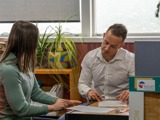The Resource Management Act 1991 (RMA) sets guidelines for the use of New Zealand’s natural and physical resources, in both the urban and rural environments.

Local authorities (eg district, city and regional councils) are required to implement the RMA and oversee its day to day running. The main way we do this is by drawing up district and regional plans. These documents interpret the objectives of the RMA and translate them into actual rules and laws that apply within specific districts and regions.
The Buller District Plan (BDP) has objectives, policies, and methods, including rules that guide how we manage issues affecting people and communities, ecosystems, land, rivers, air and water. The rules in the BDP will say whether you can do something as a permitted activity, meaning you can do it as of right, or whether you need to get a resource consent first.
Resource consents
A resource consent is a formal, written permission to undertake an activity on a particular site. Permission must be obtained to carry out activities that are restricted or controlled by the rules set out in the Buller District Plan.
When you apply to the Council for a resource consent, we follow the processes set out in the RMA.
Resource Management Act 1991.
To find out whether you need to apply for resource consent or for any other planning enquiry, please contact Council’s Duty Planner either by emailing planning@bdc.govt.nz, or by phone (03) 788 9603 between the hours of 10am to 12pm and 2pm to 3pm Monday, Tuesday, Thursday and Friday to discuss your proposed activity.
When is a resource consent needed?
You must apply for a resource consent when you plan to carry out activities that:
- are not permitted “as of right” in the district or regional plan or
- exceed the rules of the district or regional plan in some way.
- If you believe that your proposed activity is permitted or can be carried out without resource consent, you may wish to apply for a Certificate of Compliance.
There are 2 main types of resource consents for district councils:
- Land use consent
- Subdivision consent
How do I apply for a resource consent?
You (or someone representing you) will need to complete an application form and submit it to Council.
It is important to supply as much information as possible in order for the consent to be processed in the minimum time. If we need to request further information from you, this will affect when we can begin processing your application.






